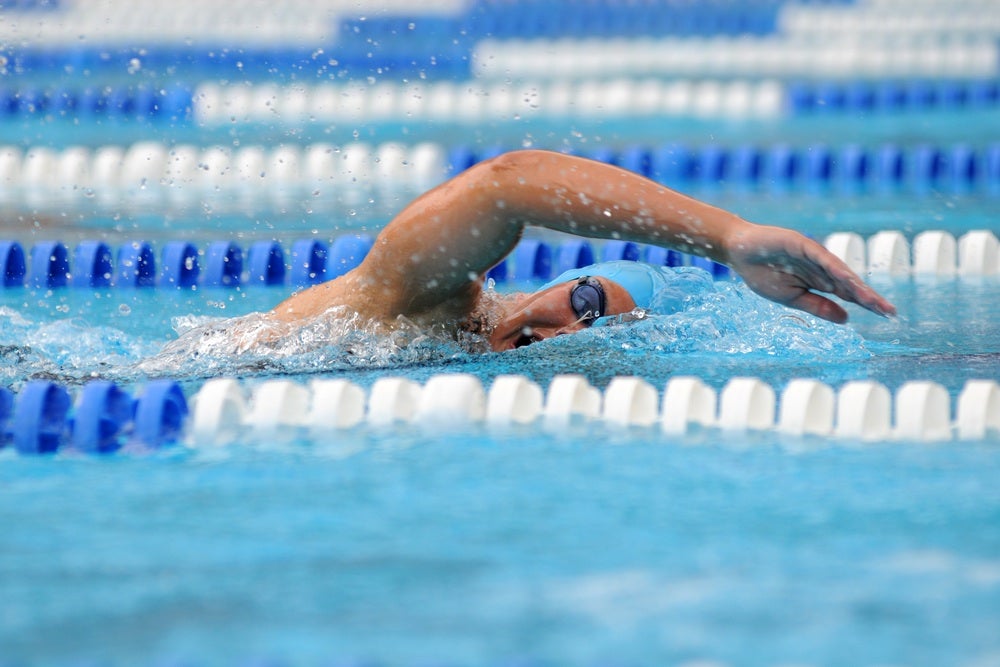Swim Speed Series: Keep Your Head Down

Photo: <a href="http://www.shutterstock.com/gallery-338935p1.html?cr=00&pl=edit-00">muzsy</a> / <a href="http://www.shutterstock.com/?cr=00&pl=edit-00">Shutterstock.com</a>
A proper head position means you’re working less to move forward faster.
Just like in golf, there’s a temptation in swimming to look up. In fact, 95 percent of the swimmers who come to train with me—from beginners to Olympic hopefuls—hold their heads too high in the water in freestyle, as well as in backstroke, breaststroke and fly.
Holding your head high is bad for two reasons:
1. Lifting your head in the water creates a nice bow wave bouncing off of your forehead with every stroke you take. How significant can that be at the speed you are swimming? Well, surprisingly significant. Surface or wave drag is one of the most important forces that contribute to you slowing, and your head is the primary culprit. By lowering your head in the water, particularly as the lead hand enters the water (the fastest point in your stroke cycle), you actually allow the wave to go over your head and let that wave drag just pass you by.
2. When you lift your head, your backside sinks down in the water. Suddenly, you turn your relatively straight body into a hammock in the water. As a result, your body’s drag coefficient (the amount of resistance you create in the water) increases and you are working harder for the same precious yards of gain.
So why does everyone swim with their head up?
Self-defense, for one. If you have ever been smacked in the head by someone veering into your side of the lane, you, too, will swim like Tarzan from that moment on. When your head is in the proper position, looking straight down, you will not have a clue as to what is in front of you, only that black line painted on the bottom of the pool. Avoid those head-on collisions by staying way to the right, leading your lane if possible or leaving 10 seconds behind the person in front of you.
The other reason has to do with the ongoing conflict between power and frontal drag. Although the position of least frontal drag for your body is a straight body in alignment with your head, to get the most power at the initiation of the underwater pull (lift and propulsive phases), you actually have to arch your back some, just as if you were trying to start a pull-up. In fact, if you closely observe the lower back of a fast swimmer during the stroke cycle, you will find that the lower back arches some at the initiation of the underwater pull, then straightens as the next hand enters the water, repeating this cycle over and over. As a result of the arch, the head also lifts slightly higher in the water, causing more frontal drag.
Head position is another example of the compromise you need to take between the position of least frontal drag and the position of most propulsive power. Remember, however, if you are going to err, side with the least frontal drag. It trumps power in swimming.
Open Water Tips
Practice for open water in the pool by turning your head rearward for the breath, which will make it more natural to return the head to the down position. This also helps you avoid swallowing some water by keeping your mouth behind the bow wave created by your head. The only times you should be looking forward in open water are at the beginning of the race and when you’re sighting. Otherwise keep your head down.
Check out these two videos from The Race Club for tips on how to keep your head down:
http://www.theraceclub.net/videos/secret-tip-head-position-1of2/
http://www.theraceclub.net/videos/secret-tip-head-position-2of2/